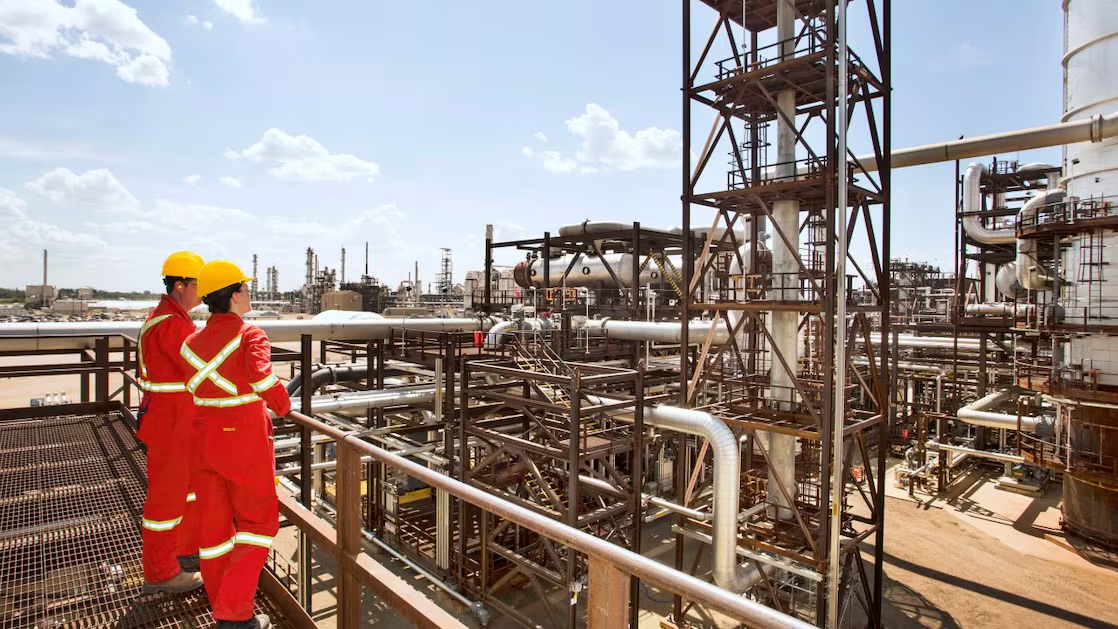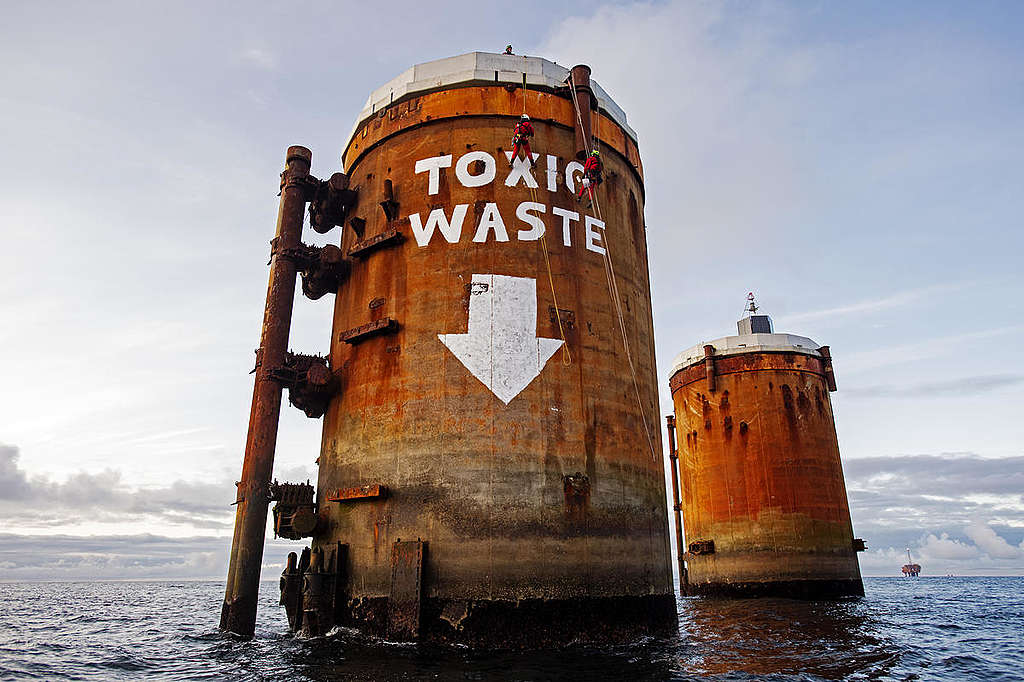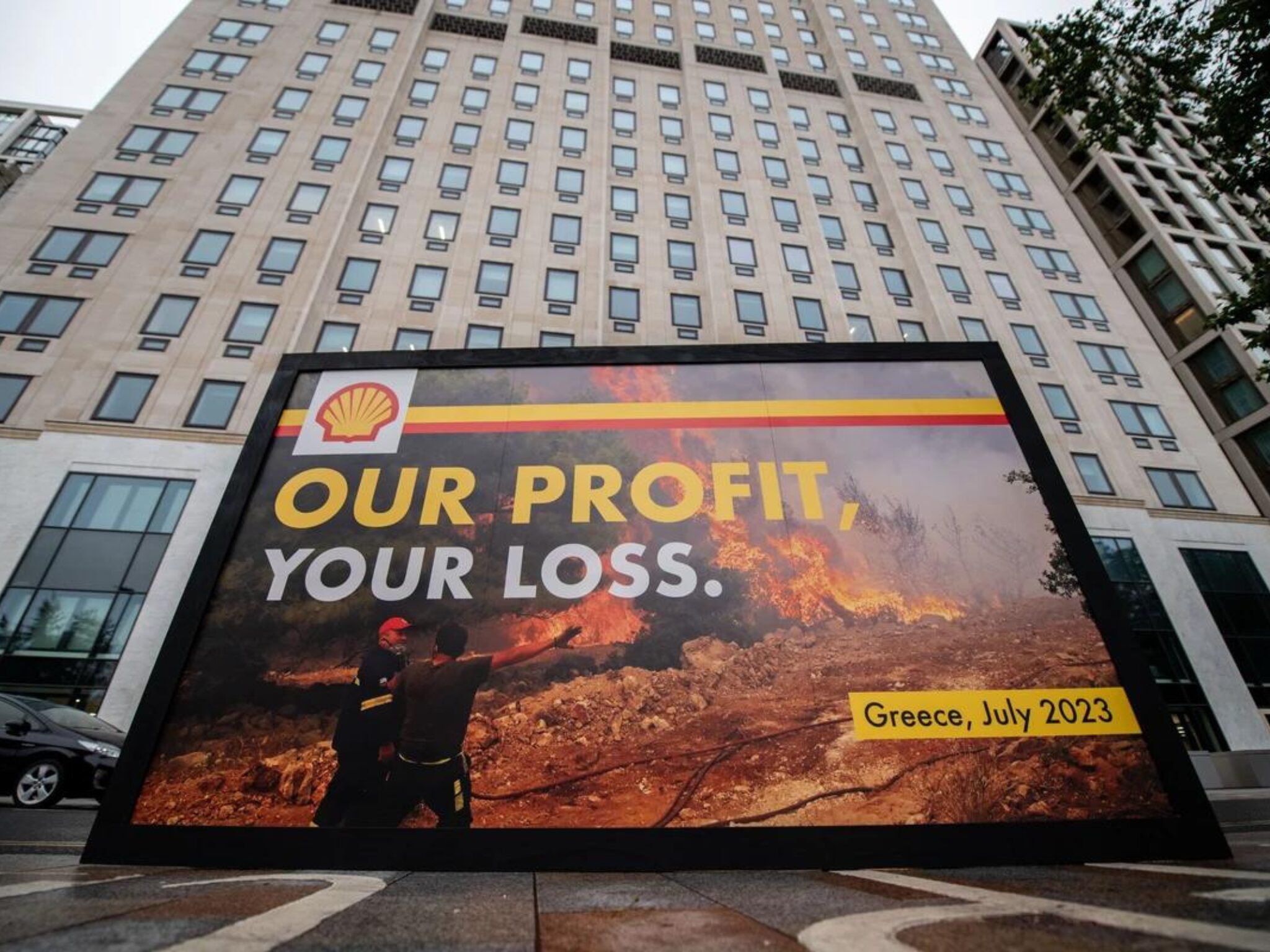Shell Sold $200M Worth of ‘Phantom’ Carbon Reduction Credits That Never Happened
5 Mins Read
British fossil fuel producer Shell’s flagship carbon facility – built on taxpayer money – has sold over $200M worth of emissions credits for reductions that never happened.
Shell, one of the world’s largest oil and gas companies, has made more than $200M by selling carbon credits for reductions that never happened, according to a new investigation by Greenpeace Canada.
These ‘phantom’ credits were sold under the fossil fuel giant’s Quest carbon capture and storage (CCS) facility, which was facilitated by an exclusive deal with the government of Alberta. This is the latest example of the fallacy that this technology can help large polluters reduce their emissions, something oil sands companies in Canada are currently advocating for.
“Selling emissions credits for reductions that never happened is the worst kind of hot air, because it literally makes climate change worse,” said Keith Stewart, senior energy strategist at Greenpeace Canada and author of the Selling Hot Air report. “The false promises and phantom emissions surrounding this project are a powerful illustration of why Canada needs a legislated cap on greenhouse gas emissions from the oil and gas sector.”
Taxpayer money covered ‘phantom’ credits that netted Shell $200M

Greenpeace Canada obtained documents via Freedom of Information requests showing that Shell lobbied for and received a two-for-one deal during subsidy negotiations with the Alberta government in 2020. It meant Shall was able to sell credits for two tonnes of CO2 for every one tonne its Quest facility actually captured, and keep all the profits in the process.
“These phantom credits provide no environmental benefit while enabling Shell and its partners to extract more oil from their oil sands operations because they don’t have to pay the full carbon compliance costs,” Stewart wrote in the report.
The Alberta government granted 5.7 million tonnes of credits to Shell as part of its battle to tackle criticisms of oil sands (petroleum deposits also called tar sands) as ‘dirty oil’ – the province is home to one of the biggest and most carbon-intensive oil deposits globally, where production has boomed. In 2008, it released a carbon plan that foresaw oil extraction continuing to increase, but greenhouse emissions going down with the widespread application of CCS.
With the subsidy (which was initially requested to be three-for-one), Quest sold credits to top oil sand producers and some of Shell’s own subsidiaries, with some of the largest buyers including Chevron, Canadian Natural Resources, ConocoPhillips, Imperial Oil and Suncor Energy.
The plant was launched as a pilot project that would capture and store 30 megatonnes of carbon annually by 2020. But in reality, Quest managed to negate just one megatonne of emissions in 2022, and capture less than a third of the emissions from the oil sands upgrading facility where it’s located and less than 1% of upstream emissions from the oil sands.
Shell had received $777M in subsidies from the provincial and federal governments by the end of 2022, as well as $406M in revenue from the carbon offsets. The actual emissions it has avoided make up 50% of the latter figure in this time, which implies that it has made $203M in additional ‘phantom’ credits. Taken together, it means Canada’s taxpayers have covered 93% of the costs of the Quest CSS project for Shell, which earned $28B in revenue in 2023.
“This was all legal, but that doesn’t make it right,” said Stewart. “Those who have polluted and profited the most must be held accountable.”
Shell buying more credits while weakening climate pledges

The report warns that this could become a recurring pattern. While government subsidies for Quest – which is jointly owned by Shell Canada, Canadian Natural Resources, and Chevron – have since been ended, an oil sands coalition called the Pathways Alliance is now similarly proposing to capture 10-12 megatonnes of carbon per year.
This amount is less than 15% of upstream emissions from the oil sands, and 2% of their full life-cycle emissions. Moreover, the proposal is premised on federal and provincial governments again paying for the lion’s share of the costs, despite these companies registering record profits.
Stewart argued that the greater danger, really, is the use of publicly funded CSS as a greenwashing-led PR strategy to avoid the need to change their core business. “We need oil companies to start phasing down production, while financially supporting the most vulnerable people, communities, and countries in their transition to clean, renewable energy,” he said.
Last November, the International Energy Agency warned oil companies against excessive reliance on CCS, noting that an “inconceivable” amount of CCS would be needed to cut GHG emissions at existing production rates. Carbon capture technology, which has been touted by many as a viable way to cut emissions, has come under heavy scrutiny in recent years, with some of the world’s biggest creditors found to have been ineffective in addressing the issue.
Shell, which is suing Greenpeace for a separate climate protest, is doubling down on these efforts – last year, it bought 16 million tonnes of credits (the highest of any company). It is the joint second-largest investor-owned oil polluter, responsible for 1.2% of global emissions since the 2015 Paris Agreement. One report has shown that Shell is among four other fossil fuel giants that could lead to the death of 11.5 million people this century – but the company has actually weakened its climate pledges.
“The pace of transition depends on action in many areas, including government policy, changing customer demand and investment in low-carbon energy,” a Shell spokesperson told the Guardian in March. “Our aim is to play our part in a balanced energy transition, where the world achieves net zero emissions without compromising on delivery of secure and affordable energy, which has improved so many lives, and which people will continue to need today and for many years to come.”
In response to the Greenpeace Canada report, Canadian energy and natural resource minister Jonathan Wilkinson told the Financial Times a two-for-one system for carbon credits was “probably not appropriate”. He added: “At the end of the day, the oil and gas sector and the oil sands firms in particular need to get going with respect to emissions reductions.”




